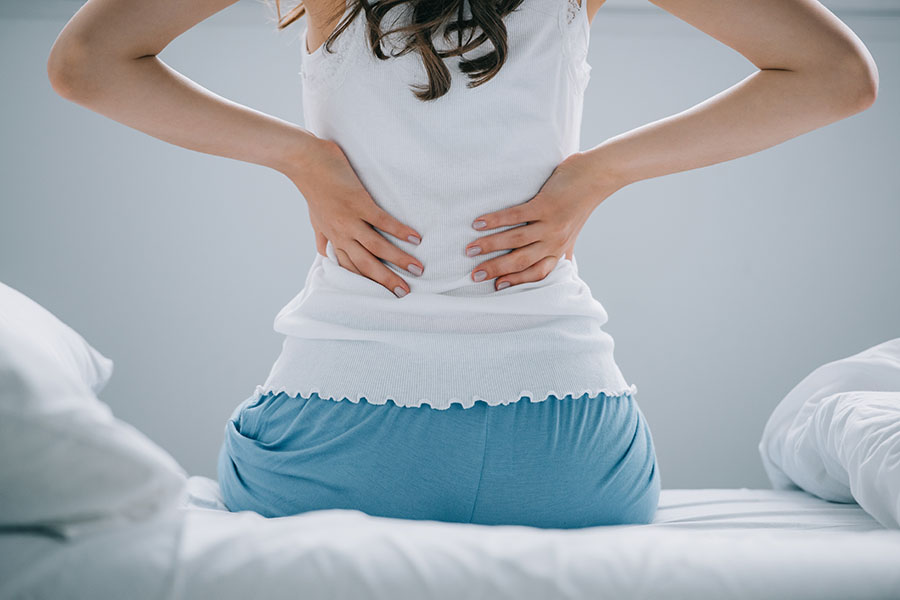Lower back pain is one of the leading causes of disability in the 21st century yet most back pain is not due to a serious medical condition but is the result of stress and strain or poor health and posture habits.
Of course, if you suffer from severe pain, we recommend that you seek medical advice right away from your doctor or by visiting our office. But for those who already have a diagnosis, or who have dull aches and pains, adjusting your sleeping positions can improve your pain relief and sleep quality significantly.
Here we have the best positions for sleeping with lower back pain and the simple adjustments you can make to improve your sleep hygiene and quality of life.
How to Sleep on Your Back
It seems counterintuitive, but in most cases sleeping on your back is actually the best position for lower back pain. If done correctly, this position distributes your weight evenly across your body’s largest surface area and reduces pressure to your joints, spine, and internal organs.
While laying flat on your back, place a small pillow under your knees to support your spinal alignment and keep the natural curve of your spine. If there is space between your back and the bed, you may also place a small rolled up towel under the small of your back for extra support.
Get Back Your Normal Life Again
As pain specialists, we can guarantee that we are more than qualified in alleviating your pain and treating your condition.
Many may find it difficult to sleep on their back throughout the night or at all. If these adjustments do not help, you may need to try another position.
How to Sleep on Your Side
Side sleep is a preference for many because people find it is most comfortable and natural. If you are a side sleeper, it is important to ensure that you do not favor one side over the other too often because this can cause an imbalance in your muscles and cause tension in various parts of your body.
With a Pillow Between Your Knees
Sleeping directly on your side is actually not good for your spine because it does not allow for proper alignment. To fix this issue, put a pillow between your knees to elevate your upper leg and align your hips and pelvis. You may also choose to place a thin pillow under your waist if a gap causes your spine to dip into an uncomfortable position.
Fetal Position
For those who have discomfort due to a more severe diagnosis such as Lumbar Degenerative Disc Disease, sleeping in the fetal position with your legs tucked up towards your abdomen may relieve some pressure. This curvature of the spine opens up the space between your vertebrae and may reduce poor sleep and discomfort. Remember to always switch sides regularly to reduce placing strain on your favored side.
How to Sleep on Your Stomach
It is not often that people who experience back pain prefer sleeping on their stomach, but this may reduce the stress that is placed on your spine. To sleep on your abdomen properly, it is important to sleep with a very thin pillow or no pillow at all to avoid strain in the neck. It may also help to place a pillow under your hips to elevate your pelvis and keep your spine in alignment.
Most Important Key to Sleeping with Lower Back Pain
If you are still reading, you have found that spinal alignment is the key to achieving proper and comfortable sleep when suffering from lower back pain. Remembering to always keep your ears, shoulders, and hips in a line will ensure that your spine is properly cared for.
If you do not see improvement after trying these sleep adjustments, you may need to consider purchasing a new firm mattress, or a foam mattress topper depending on your current situation.
If you do not already know the underlying cause of your lower back pain or do not see improvement after home management adjustments are made, contact us at Arizona Pain and Spine Institute to develop your custom treatment plan to set you on a path towards a pain free life.

